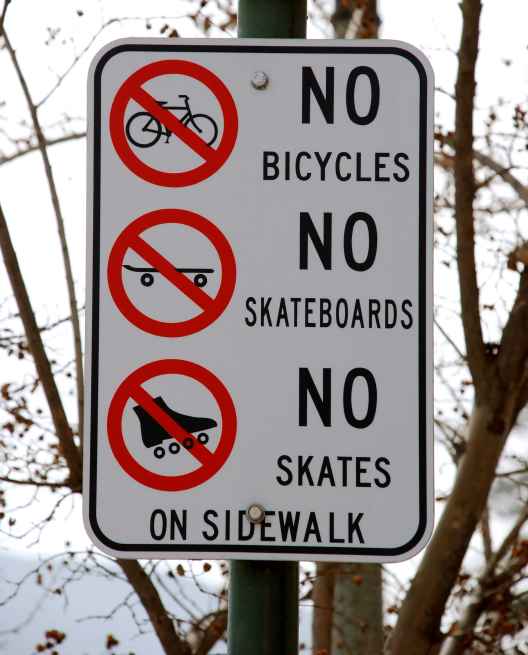
The U.S., with its state-by-state approach, offers a hodgepodge of bicycle laws. Each state has created its own traffic laws, with respect to bicycles, and different laws to protect cyclists’ rights. Even within states, there are varying regulations governing actions like where a bicycle can be ridden.
This patchwork of laws creates problems for cyclists and drivers alike. Experienced cyclists know all the rules of the road. But, if they travel any significant distance within a state, they may find themselves riding through towns whose local bicycle regulations are a mystery to them. In fact, the local bicycle regulations may be a mystery to the residents of those towns, as well.
Unlike state bicycle laws, which can often be tracked down online, local bicycle laws may be buried in ordinances unrelated to bicycling. Finding them can be as tedious as searching for a needle in a haystack. And few people are likely to make the effort.
Problems of this type don’t exist to such a degree with driving laws. A few rules may change between states, but the general laws remain the same. So, no matter where a driver goes, he/she can manage to drive a car without breaking the law.
To some degree, cyclists can follow the rules of the road to achieve the same result. They can ride as if they were driving, and go with the flow of traffic. Still, certain experiences are unique to them.
Local customs, which often dictate how and where people ride bikes, can take a cyclist by surprise. Towns with many bike paths or boardwalks often create a leisurely mindset which results in large numbers of bikers riding on sidewalks. The same holds true for tourist locations where out-of-towners go sightseeing by bike and window shop while riding at a slow and steady pace.
Attaching a leisurely connotation to bikes causes drivers to see cyclists less as people riding for transportation and more as people engaging in leisure activities. In such places, drivers might not expect to see bikes on the roads or consider that they must follow the rules of the road.
This can be a good thing in highly trafficked areas since it causes drivers to slow down when approaching bikes. But, it can also be a bad thing for any cyclist who wants to be treated as the operator of a vehicle because drivers have a difficult time assigning two different meanings to the same thing. They will treat any bicycle as if it should engage in the dominant bicycling behavior.
When traveling, both cyclists and drivers from a particular region will practice the behaviors common to their native towns. It might not dawn on them that the local cycling behaviors may be different. For instance, in urban environments, cyclists become more aggressive to command a place on the road. Riding on a sidewalk, in these locations, is not a leisure activity, but rather a way to beat traffic or to park a bike. Too often, cycling speed on the sidewalks is excessive, possibly to match the hustle and bustle of urban life.
Transplanting a leisurely beach community biker into such an environment might result in a cyclist tying up traffic on a sidewalk when they should be riding in the street. A similar mismatch would occur when transplanting urban cyclists into a beach community. Their riding style would be too aggressive for sidewalk riding, and their quick maneuvers on the road would startle unsuspecting drivers.
The source of this problem is lack of uniformity in bicycle laws and the concrete set of expectations this would engender. If there were a uniform set of rules for bicycles, which could be distributed throughout the country, cyclist behavior and driver expectations would become more consistent.
Regional differences would still exist, due to cultural differences, but the establishment of fundamental ideas about how bicyclists should act would make traveling from one state to the next much easier.
As bicycle advocates fight for more bicycle infrastructure, they should give consideration to creating continuity in both physical infrastructure and legal infrastructure so that bicycles will be treated equally in all jurisdictions. Bicycling legal infrastructure should not just pertain to traffic laws, but should extend to penalties for harassing cyclists and injuring or killing them with motor vehicles. The goal should be accountability all around. Cyclists should adhere to the rules of the road and drivers should drive responsibly or else suffer consequences for their actions, beyond a slap on the wrist.
A first step in this direction would be to review bicycle laws on a state by state basis. Then, the similarities should be noted in order to lay the groundwork for a common set of laws. In states where common laws don’t exist, cyclists should advocate for adding such laws to the books.
Once that is accomplished, cyclists should draft more comprehensive laws to protect cyclists’ rights on the roads. These laws would establish precedents for holding drivers accountable for injuring cyclists, particularly in common ways like dooring or passing within three feet of a cyclist.
In many places, drivers see the harassment of cyclists as amusing. Some may just like the idea of taunting cyclists, while others may be unaware of the dangers seemingly harmless pranks, like blasting a horn in close proximity to a cyclist, can cause.
Harassment laws are of the utmost importance. Verbal and physical cyclist harassment laws vary greatly from one area to the next. Such laws must exist nationwide because harassment is a frequent cause of cycling crashes, and untold numbers of injuries could be prevented just by enacting these laws.
Uniformity is the key to predictability. And, predictability is a major component in creating a safe environment for cyclists. Therefore, our goal as cyclists should be to aim for uniformity in bicycling laws to foster safe cycling conditions nationwide.



